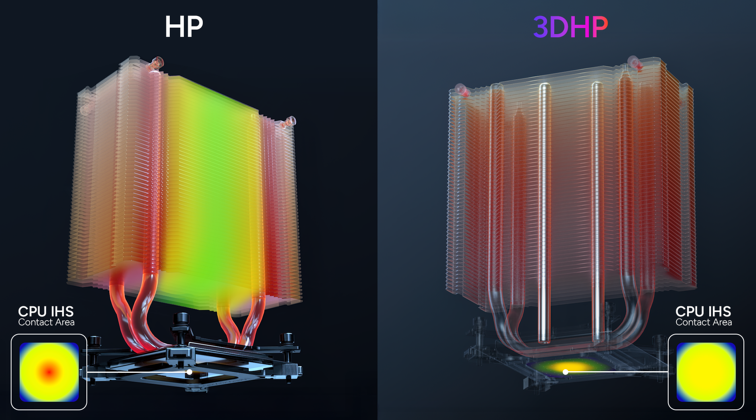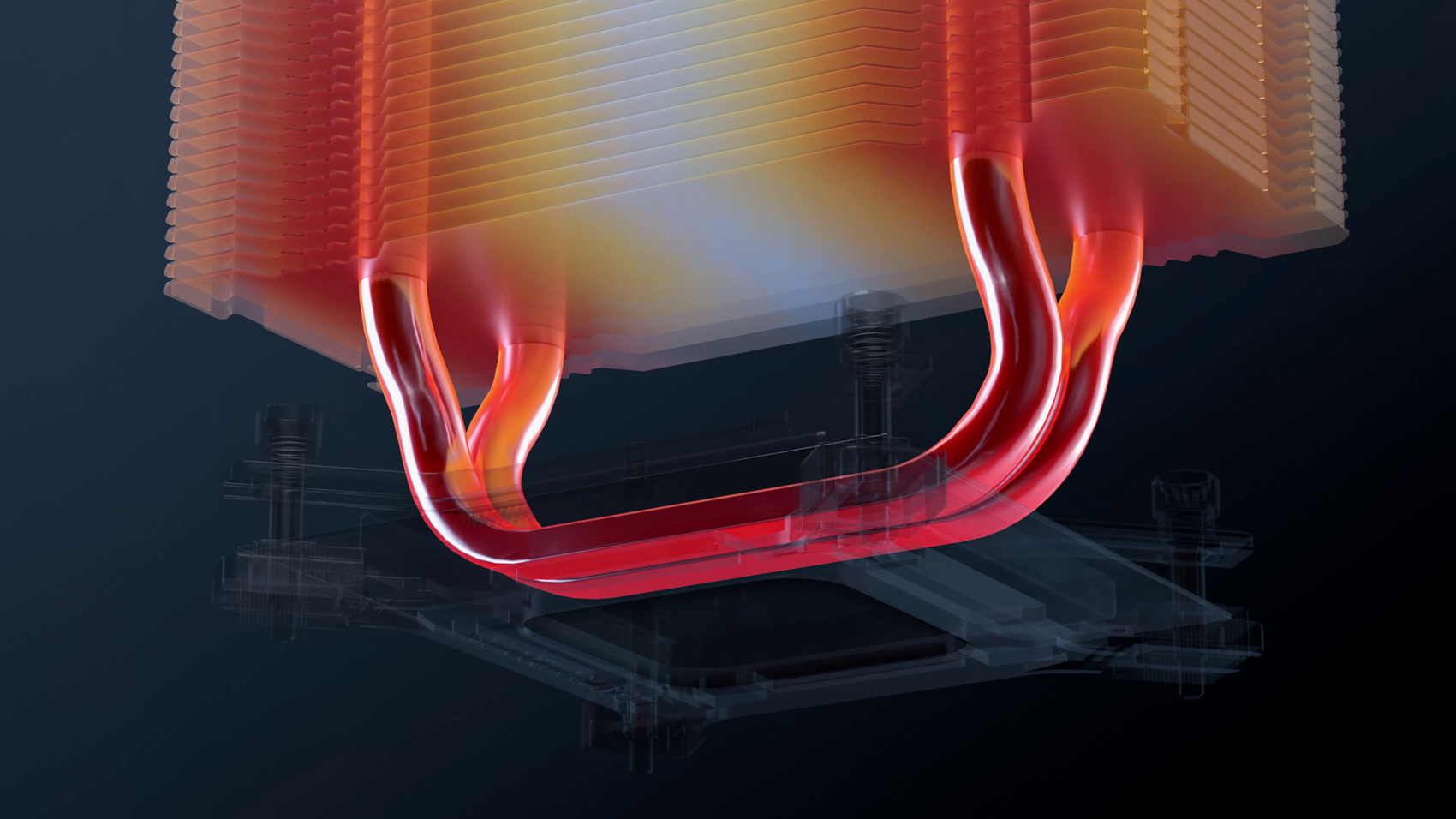Cooler Master’s 3DHP isn’t about adding more heat pipes—it’s about putting them where they actually work.
Cooler Master’s 3DHP isn’t about adding more heat pipes—it’s about putting them where they actually work.
Traditional U-shaped layouts place heat pipes in parallel through the base of a CPU cooler. It’s a proven design, but it leaves performance on the table—especially when airflow dynamics and real-world heat dispersion are considered.

3DHP rethinks the geometry
By adding a third heat pipe in an offset position—neither centered nor symmetrically aligned—Cooler Master engineers found a way to improve thermal transfer without increasing cooler size or airflow requirements.
Why Traditional Layouts Fall Short
Most CPU coolers use two heat pipes on either side of the base in a mirrored U-shape. But fans don’t push air evenly across the fin stack. The highest pressure zone isn’t at the center of the fan—it’s at the edges. That means airflow doesn’t cut straight through vertically aligned heat pipes the way it does in diagrams.
And if heat pipes are stacked in a direct vertical path, heat can pool. It rises into one pipe and then gets bottlenecked trying to move through the same thermal corridor as the next.
The 3DHP Advantage
3DHP places a third heat pipe in a staggered position—offset from the vertical path—so that each pipe can move heat up through its own dedicated airflow lane. This layout improves surface contact with the fins, increases cooling efficiency, and ensures the fan can do its job: pulling heat through the stack, not just around it.
It’s a simple shift with outsized impact.
• No vertical stacking: Prevents heat buildup by ensuring each pipe has its own cooling path.
• Better airflow targeting: Aligns with where the fan pushes air most effectively—along the edges.
• Improved fin saturation: Creates a more balanced temperature gradient across the cooling tower.
Designed with Real Physics in Mind
The brilliance of 3DHP isn’t just in pipe count. It’s in placement. That offset pipe forces the entire system to work together more efficiently—heat pipe, fin stack, and fan airflow.
Instead of assuming ideal conditions, Cooler Master engineered 3DHP around actual airflow behavior, real CPU load patterns, and practical system constraints like case orientation and memory clearance.
In testing, the 3DHP layout delivers:
• Lower peak core temps in sustained workloads
• Smoother fan response curves
• Improved thermal recovery after load spikes
Cooler Master’s Thermal Engineering in Action
This kind of detail is what defines Cooler Master’s approach to engineering. 3DHP wasn’t the result of adding more—it was the result of thinking more.
By observing how heat moved through coolers in real-world systems and how fans actually interact with fin stacks, our engineers identified a blind spot in conventional cooler design—and solved it with one precisely placed pipe.
